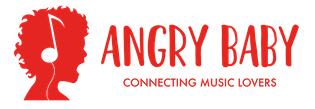As a music blog we are of course aware of the importance of music in every day life and arguably, the importance has only increased during lockdown. However, that doesn’t necessarily mean that we as an audience have been looking to find and buy new music; on the contrary. As a writer and reviewer I noticed a distinct lack of new music being shared and as a listener and confirmed social media addict the trend seemed to be towards listening to old favourites, often from way back in the day. The older the listener, the further back into the music collection was a general rule. Most of us can remember the first album we bought and our first pin up (Wham! and George Michael, in case you’re wondering).
Why is this? Why are we, as a general audience, choosing to listen to old favourites rather than new music? Maybe it’s because of the comfort we find in listening to old tunes that remind us of happier times, maybe we finally have time to dig back through the songs we know by heart – whatever the reason, it’s where we want to be right now. And the upshot, for the first few weeks at least, was that fewer artists were releasing new material and of those that did, it was being shared less. A notable exception to this was Laura Marling who brought her album release forward in response to lockdown, accompanying with YouTube guitar tutorials to specifically engage with fans.
Laura Marling aside, where does that leave independent artists? The amount of independent music being shared and released has risen considerably the longer lockdown has gone on – after all, music can’t be on hold for ever. This is good news for the indie industry as a whole but doesn’t necessarily address the issue of what happens when the music stops, particularly live music. Performers of all kinds saw their only source of income dry up overnight at the beginning of lockdown and there doesn’t seem to be an end in sight. When, if ever, the live music industry gets back to anything like normality, or anything approaching normality which also happens to be financially viable, is a vexing question and the answer seems to be quite some time in the future.
Independent artists are at much greater financial risk during this pandemic due to the reliance of live music as a way to both earn and promote their own music. With this earning capability currently cut off, some artists are taking their music direct to fans via social media and YouTube. Angry Baby itself hosted an online concert and plenty of others are doing the same. One such artist is singer songwriter Hattie Briggs, who has played a live concert on Instagram most Wednesdays since lockdown first began. I spoke to Hattie about this and also her thoughts on where the industry as a whole might go.
Asked why she had started the online gigs, Hattie said that she “plays a lot of gigs, it’s my main income and going online seemed a good way to connect with fans and to perform. The audience gets to interact, choose the songs, comment in real time and they can tip us…an income to get us through…After the first one, we had such a great response we decided to do it weekly if everyone is going to enjoy it.” Asked whether or not there is a theme of old songs being requested and whether or not that is related to feeling comforted, Hattie agreed, saying that “it’s the same time each week, it’s a routine, favourite songs, shout outs…we have a loyal audience and it’s better to have a small but loyal audience, it keeps it personal, which is what music is all about these days.” In addition, Hattie has played some private Zoom house concerts and feels that live streaming and webinars might be the way forward for the time being and envisages that whilst not replacing live gigs altogether, online gigs will become much more of a standard tool, one advantage being that it’s a lot cheaper and reaches those who might enjoy the music but are unable to attend a venue. “It would be an extra way of earning a living for smaller artists.”
In the meantime, like many of us, Hattie has been using her time in lockdown to learn new skills, in her case, building up studio and production skills (she is staying with her cellist, Jas, who has a small home studio) which she says is a “plus side” to lockdown. Creatively, like a lot of artists, Hattie has been writing songs and recording as much as possible in order to get an income and says “it’s actually comforting to know you can make money online.”
This last sentence sums up what lockdown has meant for independent artists; deprived of their usual income stream, finding alternative ways of earning is key. We’d love to hear what your experiences have been do drop us a comment below.
You can catch Hattie’s Instagram gigs here:

